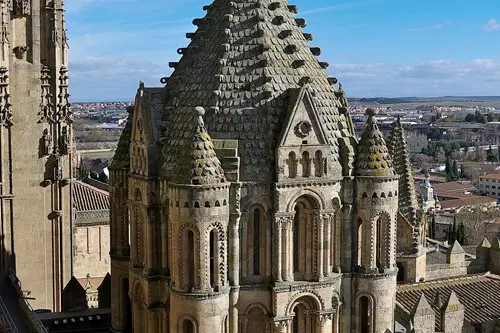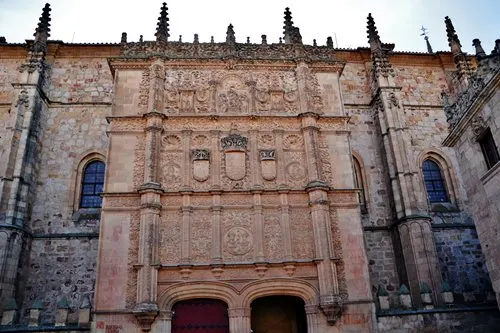
Cookie settings
We use our own and third-party cookies in order to offer our services, display videos, obtain statistics and offer personalized advertising.
For more information, please read our cookies policy.

The New Cathedral has a Latin cross plan, with three naves and adjacent chapels. The main façade shows us three ogee arches.
The whole group is decorated with human and animal figures, heraldry sculptures and vegetal and geometrical ornamental motives. This cathedral is dedicated to the Virgen de la Asunción.
Inside, there are wide pillars of almost forty meters height. The Baroque dome located over the transept is 80 meters height, and produces a sensation of grandness. The choir, by Joaquín Churriguera, is deeply decorated and constitutes one of the most relevant choirs in the Spanish Baroque. The Golden Chapel is decorated with symbolical bass- relieves and glazed- tiles.
The Major Chapel is Neoclassic. On both sides there are some urns with San Juan de Sahagún, patron Saint of the town and Santo Tomas de Villanueva´ s remains. The sacristy, from the XVIII Century, keeps Maella´ s paintings and a reliquary with numerous objects of artistic and historic value.
Built: XVI – XVII Centuries
Author: Rodrigo Gil Hontañón, José Churriguera
Style: Baroque, Gothic
Category: Religious
Type: Cathedral
Address and telephone
Opening times
Prices
If you see any mistakes or want to add anything to this information, please contact us.




Book your hotel